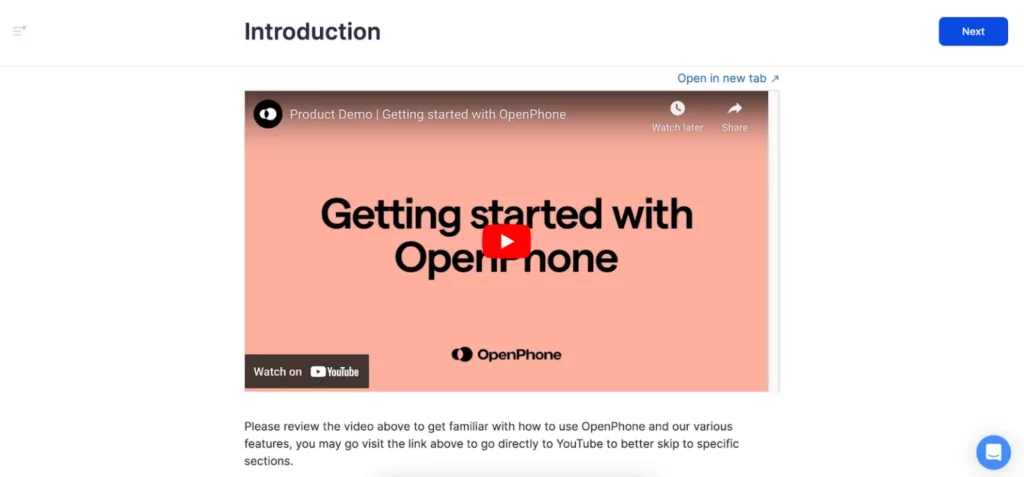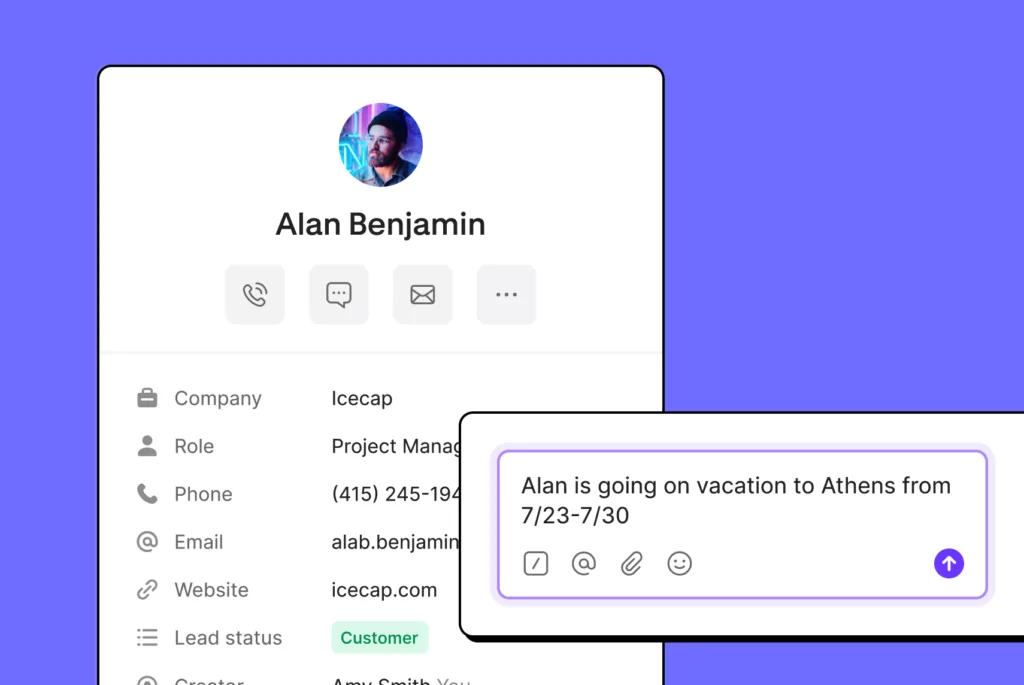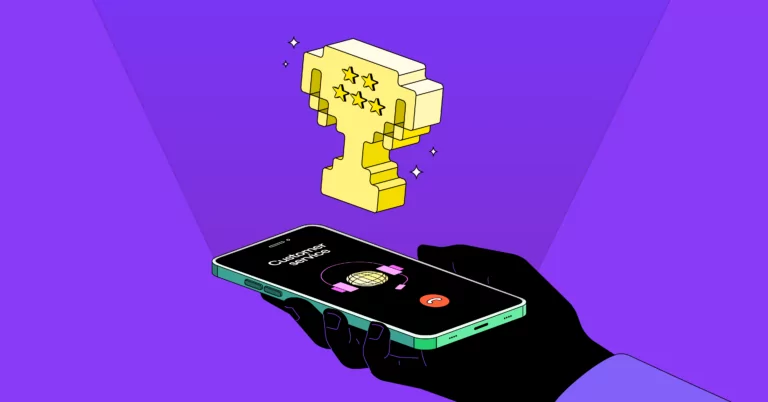The mantra of customer support teams everywhere is to “meet customers where they are.” Easier said than done, right?
It can be hard when your team has customers contacting you across different channels with different problems and expectations. One bad interaction can turn a loyal customer into a churned customer.
There are many ways to provide amazing customer service while also growing and improving your brand reputation. Offering a five-star customer experience requires a combination of tactics: leveraging technology, training your employees, and implementing a few other tried-and-true methods.
1. Set up self-service resources for customers
Even if you provide exceptional customer service, the reality is that many customers would rather self-serve. Contacting your team takes time out of their day. They have to explain the problem, hope the first line of support can solve their problem, and wait for a solution. Not to mention, unless you provide 24/7 customer service, your support hours may not meet the customer’s schedule.
The more self-service options you provide your customers, the better. You might consider any of the following:
- A knowledge base with helpful articles
- A chatbot that provides responses to frequently asked questions so the customer doesn’t have to wait for an agent
- A customer portal for common actions like updating billing information or initiating a return without speaking to an agent
- Video tutorials that show customers how to use products or features
With any of these options, you’ll also want to provide an easy way for customers to reach out to your customer service team. You don’t want them to feel like self-service is in lieu of talking with a representative.
Tactical Tip: If you’re building a help center for the first time, you’ll want to prioritize tickets with the biggest impact on your support volume. This is especially important as you scale your customer support: you don’t want your reps spending time replying to the same questions.
The easiest way to do this is by categorizing incoming tickets. “Ticket categorization allows you to easily identify the top reasons why customers are reaching out to customer support,” says Sunny Tripathi, Senior Support Operations Manager at OpenPhone. “These questions can then be turned into help articles — or even product improvements.”
2. Invest in training sooner rather than later
Scripts and standardized responses make it easier for reps to answer customer questions. But without proper training, your reps might rely too heavily on scripts. We all know the example. You call customer support, and after explaining your problem, the rep replies, “I’m sorry to hear you’re having this issue” — in a way that sounds robotic. Customers immediately think the opposite: that the rep doesn’t care.
Nykki Yeager, CEO of Flight CX recommends that reps should be given the freedom to make judgments about conversations and add “qualitative contributions.” To ensure that reps don’t go too far off-track or off-brand, she suggests training materials that are “structured and repeatable.” These create consistency as team members come and go.

You can also have new team members shadow more experienced team members to learn how to respond in different customer service situations or when receiving negative customer feedback. Shadowing teaches less experienced team members helpful soft skills, like active listening.
Tactical Tip: Like creating help articles, there is some upfront effort to create customer service training materials. By doing this, “It ensures that everything is going to be consistent through each cohort of new hires you bring in,” says Nykki. Training materials also enable problem-solving.
She’s a fan of PowerPoint decks and lectures between a facilitator and the team. She also mixes in practical exercises, self-directed readings, and written reflections.
3. Nail the basics to ensure consistency across channels
Some customers prefer email. Others want a phone call. Some would like to chat. And others might try to contact you via social media channels.
For growing customer service teams, providing quality service across multiple channels can be hard to manage. A pitfall is trying to do too much too soon and losing customers due to inconsistent experiences. A customer might reach out via chat, find that it takes too long to get a response, and try email next. Even if the email rep replies quickly, the customer now feels frustrated. According to a report by Salesforce, 83% of customers are more loyal to companies that provide consistency across departments.
You’ll want to equip your reps with standard operating procedures, especially if they split their focus across multiple channels. Ticketing tools can help you centralize incoming inquiries so customers are prioritized appropriately, regardless of the channel.
Tactical Tip: Nykki recommends that you don’t add too many channels too fast. “Nail your top channel, get it solid and stable, and then add more channels from there,” she says. “Set expectations for response time per channel that are appropriate for your level of staffing.”
Make sure you update your phone menus and automated email responses for holidays and busy times of the year. Check out our guide to managing high call volume for more tips.
4. Automate processes to take more off your plate
For small businesses with limited budgets, tools and automation might feel like a “nice-to-have” rather than a “must-have.”
However, Nykki calls these a “force multiplier.” With the right tools, you can do more with fewer reps, respond to customers more quickly, and eliminate repetitive tasks in ticketing and customer support.
For example, you can automate ticket routing so questions get in front of the right rep. If incoming phone calls ring to groups of reps, you can answer customer calls more quickly. An interactive voice response (IVR) phone menu — a feature of OpenPhone — allows callers to say a specific word to reach the right team, person, or piece of information.
Tactical Tip: If you have standard responses to frequently asked questions, you can have ready-to-use templates for reps. Macros within a ticketing system can automatically update tickets or follow up with pre-written responses or actions.
5. Centralize your customer relationship management
As your customer base and team grow, it will become harder to track information about customers. Individual team members might know little details about customers that can add a personalized touch to interactions (such as the customer’s favorite sports team). However, the information is not scalable without a centralized place to store notes.

A customer relationship management (CRM) system gives you a way to store notes about your customers. When talking with a customer, a rep can easily see relevant details. When a CRM is integrated with your phone system (like OpenPhone), you’ll also see a history of call interactions.
A CRM will also help you segment your customer base. For example, you might identify your highest-paying customers in your CRM so they’re given priority support.
Tactical Tip: You can add custom fields to your CRM for things like birthdays or anniversaries. Use this data to send handwritten notes on special occasions and build relationships with your customers.
6. Take care of your team so they’ll take care of customers
How your support reps feel about their jobs will directly affect how they treat customers. If they feel unappreciated, they won’t be motivated to provide great customer service. Low morale will also translate to doing the bare minimum instead of going the extra mile.
Five-star customer service is like a fancy cake. Yes, it needs to look fantastic to make a good impression. But the inside — the ingredients — is just as important. You need the ingredients for a great cake, and that all happens behind the scenes with your customer service team.
To support your reps and improve employee engagement, Nykki recommends the following:
- Set goals for both the team and the individual. Make sure they are clear and revisited as needed.
- Encourage bi-directional feedback, both positive and constructive, to help teammates along the journey of personal and professional growth.
- Offer opportunities for folks to connect with each other so they have opportunities to celebrate and decompress.
By creating community within the team, employees can also turn to each other for support.
Tactical Tip: Check out the BICEPS model, which stands for Belonging, Improvement, Choice, Equity, Predictability, and Significance, as a reminder of the core needs we possess. With each of these in mind, you can better empathize with your reps during any conversation.
7. Measure progress holistically
Any time you implement new tactics within your customer service team, you should identify corresponding metrics to measure success.
Sometimes, customer service leaders measure and incentivize a single metric, such as time to resolution. In theory, this metric makes sense if you’ve added automation or worked to improve a consistent experience across various communication channels. However, over-focusing on one metric can lead reps to prioritize the metric rather than the customer experience.
Instead, you should look at several metrics holistically, including:
- Customer Satisfaction Score (CSAT): This measures how satisfied customers are with your products or services.
- Net Promoter Score (NPS): This measures customer loyalty by asking customers how likely they are to recommend your company to others.
- Customer Effort Score (CES): This measures how easily customers can resolve their support issues.
- Quality Score: This measures the quality of customer interactions with a rep and is assessed against internal quality standards.
- Volume and productivity: Review the number of incoming support requests received and the number handled by each rep.
- Time to Resolution: This calculates how long it takes to resolve an issue from when the customer contacts the support team.
You can use these metrics to make data-driven decisions, especially as you prioritize different five-star service tactics. If you want to improve quality first, you might want to focus on internal training. Once you see the Quality Score improve, you can implement another service tactic.
Tactical Tip: Nykki advises that businesses be cautious with incentives and disincentives around metrics. While they can help with motivation, they can become demotivating when used excessively. You can incentivize with positive reinforcement, such as public or private praise or financial rewards. A disincentive would be a performance improvement plan or formal remediation if reps aren’t meeting the defined standards.
Build the foundation for 5-star service and boost customer loyalty
The beauty of this checklist is you can start with any tactic. It depends on your business focus and where you see the greatest need for improvement.
But over time, you should try to implement as many tactics as you can to truly achieve five-star customer service. The more you implement, the more your customers will appreciate every interaction with your customer service team.
If you found this article helpful, share it with your team! We love to see companies implement tactics to deliver better customer service.
You can also dive deeper into this topic with our guide on building a customer service strategy by Justina Altiere, VP of Customer Experience at OpenPhone.
